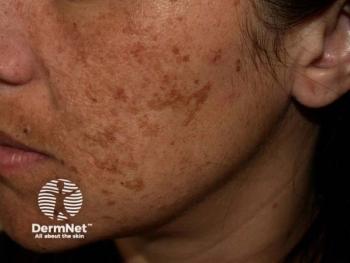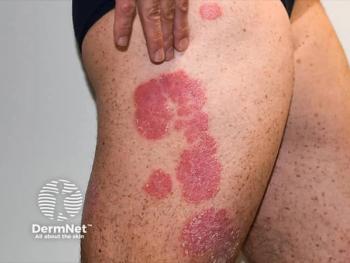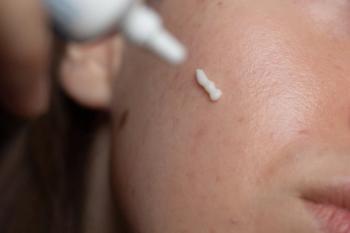
Scalp Disorders in SoC: A Diagnostic Blind Spot
Key Takeaways
- Significant diagnostic gaps exist in hair and scalp disorder care for patients with skin of color, necessitating improved protocols and training.
- Misdiagnosis is prevalent, with 63% of patients initially receiving incorrect diagnoses, often leading to inappropriate treatments.
A systematic review reveals critical diagnostic gaps in hair loss treatment for patients with skin of color, urging improved training and protocols in dermatology.
A new systematic review sheds light on significant diagnostic gaps in the care of hair and scalp disorders among patients with skin of color (SoC), emphasizing the urgent need for better diagnostic protocols and improved SoC-specific training in dermatology.1,2
The study comprehensively reviewed all available literature on misdiagnosed or diagnostically challenging hair and scalp conditions affecting patients with SoC. Using a rigorous search strategy across 4 major databases—Embase, MEDLINE, Scopus, and Web of Science—researchers assessed 3,272 titles and abstracts and 116 full-text articles, ultimately including 21 studies describing 30 individual patient cases.
Prevalence of Misdiagnosis and Diagnostic Challenges
The majority of patients (63%) had received an incorrect diagnosis that led to an initial course of treatment before their condition was correctly identified. The average patient age was 31.5 years, with a range from 2 to 75 years. Women accounted for 53% of the sample. Among the more serious errors were life-threatening conditions such as T-cell lymphoblastic lymphoma, leukemia, and malignant angioendothelioma initially mistaken for less severe dermatologic diseases.
In other cases, researchers found systemic misattributions were evident. For example, a patient was first diagnosed with a flare of systemic lupus erythematosus but was ultimately found to have neurosyphilis. These cases underscore the consequences of premature diagnostic closure, particularly when initial assessments rely too heavily on pattern recognition rather than thorough evaluation.
Tools for Diagnosis: Biopsy vs. Trichoscopy
Diagnostic aids such as scalp biopsies and trichoscopy proved to be instrumental in achieving correct diagnoses, though biopsies were more conclusive. In misdiagnosed patients, biopsies led to diagnostic clarification in 50% of cases compared to 33% with trichoscopy. Notably, among the 11 patients categorized under “challenging diagnoses,” biopsies resolved the diagnostic uncertainty in 100% of cases.
One frequently misattributed condition was central centrifugal cicatricial alopecia (CCCA), especially among Black women. Five Black patients presenting with vertex hair loss—a common pattern in CCCA—were initially diagnosed with that condition. However, further evaluation using trichoscopy and biopsy revealed alternative diagnoses including alopecia areata and lichen planopilaris. These findings reinforce the limitations of relying solely on disease prevalence and hair loss patterns without a confirmatory diagnostic process.
Structural and Educational Shortcomings
The review also emphasizes the broader systemic issues contributing to these diagnostic pitfalls. Current dermatologic education has been criticized for its underrepresentation of images and case examples from patients with SoC. Supporting this, previous studies have shown that dermatology trainees report lower levels of confidence when treating patients with darker skin tones compared to those with lighter skin.
These educational gaps can perpetuate implicit biases and diagnostic errors. For instance, in the reviewed literature, researchers found physicians often defaulted to CCCA for Black patients with vertex hair loss due to its higher prevalence, without fully considering or investigating alternative diagnoses.
Limitations and Future Directions
While the review is comprehensive, the authors note several limitations. The lack of a comparison group limits the ability to quantify the true prevalence of misdiagnosis in SoC populations. There may also be misclassification biases, as well as cultural and health care access differences across reported cases. Additionally, reporting and publication biases are likely, given the case-based nature of the included studies.
Nonetheless, the findings present a compelling case for reform. The authors call for improved training in diagnosing dermatologic conditions in patients with SoC, more widespread use of diagnostic tools like biopsies, and further large-scale studies to better understand clinician decision-making errors.
Conclusion
This study highlights a pressing need to strengthen diagnostic rigor and equity in dermatology. In an increasingly diverse patient population, clinical accuracy in diagnosing hair and scalp disorders in SoC must be elevated through both systemic reform and enhanced clinical training. Incorporating diverse case studies into medical curricula, promoting early and thorough diagnostic evaluation, and utilizing confirmatory tools like biopsies could mitigate misdiagnoses and improve outcomes for all patients.
References
- Syder NC, Omar D, McKenzie S, Brown-Korsah JB, Taylor SC, Elbuluk N. Gaps in medical education curricula on skin of color in medical school, residency, and beyond: Part 1. J Am Acad Dermatol. 2023;89(5):885-892. doi:10.1016/j.jaad.2022.03.053
- McMullen E, Joseph M, Mannala S, et al. Misdiagnoses of hair and scalp disorders in adult patients with skin of color. Int J Dermatol. 2025;1–3. doi:10.1111/ijd.17899.
Newsletter
Like what you’re reading? Subscribe to Dermatology Times for weekly updates on therapies, innovations, and real-world practice tips.


















